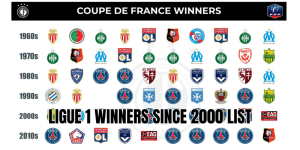In this article, KMSoccer dives deep into the ligue 1 salary per team, revealing who in France’s top tier is spending big, who’s operating lean, and how the divides in pay are shaping competition., we’ll compare payrolls, discuss what drives the differences, and spotlight the biggest earners. Let’s get started.
What does “salary per team” mean in Ligue 1?

When we talk about ligue 1 salary per team, we mean the total of estimated base (gross) wages that each club pays its players over a season, excluding bonuses, staff pay, and other non-player costs. This “wage bill” reflects a club’s financial muscle, recruitment strategy, and competitive ambitions.
Data for the 2025-26 season shows striking contrasts: some clubs are investing heavily, while others operate on much tighter budgets. These differences affect everything—on-pitch quality, squad depth, and even club survival under financial fair play rules.
Top clubs by payroll: Who spends the most?

KMSoccer tracked down the latest numbers for the highest wage bills in Ligue 1. Here are the clubs spending the most in 2025-26:
- Paris Saint-Germain (PSG) are far ahead. Their base payroll is approximately €157,940,000 annually, equating to around €3,037,308 per week.
- Olympique de Marseille come in second with about €65,120,000 per annum, roughly €1,252,308 per week.
- AS Monaco are third, budgeting nearly €45,090,000 yearly and €867,115 per week.
These top three highlight the big spenders in Ligue 1, with PSG’s payroll being more than double that of Marseille.
Mid-table salaries: Competitive but cautious

Moving down the list, these clubs have substantial payrolls but are more modest than the giants:
- Olympique Lyonnais: ~ €26,140,000 annually; ~ €502,692/week.
- Rennes: ~ €23,200,000/year, or around €446,154/week.
- Nice: About €22,930,000 annually; €440,962/week.
- Lille: ~ €21,480,000/year; ~ €413,077/week.
These clubs tend to balance ambition (trying to compete in Europe, attract talent) with financial sustainability.
Lower payroll clubs: Staying afloat
In contrast, several Ligue 1 clubs are operating with much smaller salary bills:
- Nantes: ~ €13,070,000/year, ~ €251,346/week.
- Brest: ~ €11,490,000/year; €220,962/week.
- Lens: ~ €10,220,000/year, €196,538/week.
- Lorient, Strasbourg, Auxerre and others are around €8-13 million/year range.
These clubs frequently rely on smart scouting, youth development, sales of promising players, and strict budget control. Their survival in Ligue 1 often depends on punching above their weight on and off the pitch.
What drives the large differences?
Several factors explain the wide gulf in ligue 1 salary per team:
- Revenue & commercial power: PSG benefits. European competition: Clubs in Champions League or Europa League get extra TV, match-day, and performance income, allowing them to spend more without breaking rules.
- Ownership & investment: Wealthy owners or external investment arms allow some clubs to commit more resources to wages. Others, often with more local or modest backers, have limited flexibility.
- Youth academies & player sales: Teams like Nantes, Brest, Lorient make money. Financial regulation and limits: Ligue 1 (like other top leagues) imposes financial controls (DNCG in France) and must align with UEFA/fair-play rules. Clubs must avoid overspending just for prestige. Some clubs trim payrolls to stay compliant.
Who are the highest individual earners?
In addition to which clubs have the highest payrolls, some individual players stand out:
- At PSG, the highest paid base salary goes Ousmane Dembélé, at about €18,000,000/year, or about €346,154/week.
- Other big earners include stars at PSG like Achraf Hakimi, Marquinhos, etc., but no other player in Ligue 1 reaches close to that Dembélé figure.
These top players inflate the wage bills of top clubs and create a wage-ceiling effect for others.
Implications on competition & balance
Understanding the ligue 1 salary per team helps us see why some clubs dominate, while others fight just to survive. Here’s what the financial imbalance means:
- Predictability at the top: PSG is expected to win or fight for the title. Their financial advantage translates into dee, higher-caliber stars, and ability to absorb injuries or form dips.
- Challenge for mid-table clubs: Even with strong management, these clubs often can’t match the star power of PSG or even Marseille. Their strategy often involves developing players and selling for profit rather than splashing cash.
- Relegation risk for lower clubs: Clubs with tight wage bills are more vulnerable when facing unexpected costs or failing to qualify for European or domestic competition revenue. Small missteps can lead to financial strain.
- Fan expectation vs reality: Fans expect their club to sign stars, compete, but the wage bill shows what’s actually possible given the financial base. For many fans, knowing their club’s salary budget helps set realistic expectations.
How Ligue 1 salary, for context:
- PSG’s payroll, while huge by French standards, is still often lower than the highest wage bills in Premier League or some Spanish clubs when you consider player bonuses, agents’ fees, and commercial revenue.
- The average salary per player in Ligue 1 is rising: estimates suggest ~ €700,000/year in 2025-26 for many players, though this average hides large variance between elite and lower-decked players.
- In other Big 5 leagues, many clubs besides the top 1-2 also have wage bills comparable to or exceeding mid-Ligue 1 clubs. That impacts how competitive Ligue 1 is in European club competitions.
Challenges and trends to watch
KMSoccer has identified some key trends and challenges that will shape how clubs manage salary per team in coming seasons:
- TV rights and broadcast revenue: Negotiations ongoing, and if revenue drops or is delayed, clubs might have to reduce payrolls.
- Inflation and rising salaries for emerging stars: Young players breaking through demand higher wages, pushing up the average even among smaller clubs.
- Financial fair play / DNCG scrutiny: More rigorous regulation could force wage restraint, especially for middle and lower-end clubs.
- Transfer market strategies: Clubs might rely more on loans, free agents, and lower-cost signings to keep payroll manageable.
- Parachute payments / promotion impact: Newly promoted clubs often take time to ramp up salary bills; how they manage that transition matters.
Conclusion
The ligue 1 salary per team metric paints a vivid picture of the financial landscape in French football for 2025-26. PSG stands out as the clear leader in spending, Marseille and Monaco follow behind, while many clubs operate much more modestly. Understanding payrolls helps explain who’s likely to push for titles, who’ll fight for survival, and who might surprise with clever management.
If you’re a fan, knowing your club’s wage bill gives insight into what they can realistically achieve. For those interested in stats, transfers, or financial fairness, wage data like this is gold.
Want to dig deeper? KMSoccer plans to track player-by-player salaries, changes over time, and comparisons with other leagues. Get in touch, share your club, and let’s explore together how ligue 1 salary per team influences every match, every transfer, every dream.







